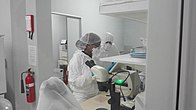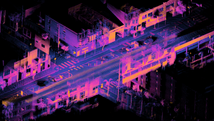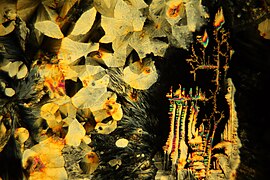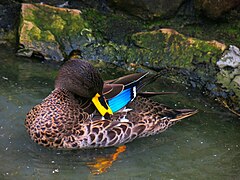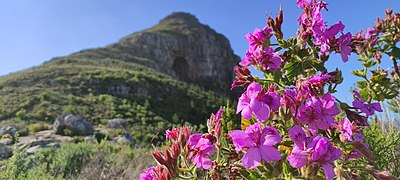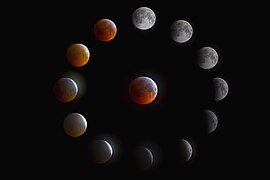Wikipedia:Wiki Science Competition 2021 in South Africa
The Wiki Science Competition is a month-long international science photography competition ending on 16 December 2021. Wikimedia South Africa is organising the South African arm of the competition. The competition was first organized in Estonia, expanded to all of Europe in 2015, and to the rest of the world in 2017. A very special category for Wiki Science in South Africa is the Fynbos category. The South African Wiki Science and Fynbos Competition has been extended till 15 January 2022
To participate, you must:
- Be the author of pictures/submissions you upload.
- Must have the rights (copyright) to upload your submissions.
- The photographs should be of a high quality and large size, and need to have a good description including what the image depicts, how and where it was made, and what is important to notice about it (please including any links to peer-reviewed publications if appropriate, not required but a very nice thing to have).
- Use the Wikimedia Commons category: Images from Wiki Science Competition 2021 in South Africa to enter your pictures into the competition. It is encouraged to add the images to other additional appropriate Commons categories. For more details, see the full international rules.
Use the hashtags ![]() #WSC2021 #WikiScience #WikiScience2021 to spread the word about the competition!
#WSC2021 #WikiScience #WikiScience2021 to spread the word about the competition!
2021 Winners
editIn South Africa
edit-
First prize: Crystal melt of sulphur and urea by Molekools
-
Second prize: True Colours (a yellow-billed Teal Anas undulata) by BeanieAll
-
Best fynbos photograph: Brown-tipped Strawflower by AJ Higgs
-
Second best fynbos photograph: Cape Mallow by AJ Higgs
Globaly
edit-
A larva of a non-biting midge under polarized light. Winner of the Microscopy images category 2021, Karl Gaff, Ireland
-
A California red-sided garter snake in its natural habitat. Winner of the Nature category 2021, Jaden Clark, USA
-
The supernova remnant Jellyfish Nebula (IC443) and its surroundings. Winner of the Astronomy category 2021, Ram Samudrala, USA
-
The invention of Wilson's cloud chamber visualizing the passage of ionizing radiation. Winner of the Non-photographic media category 2021, Maxim Bilovitskiy, Estonia
-
Research activity of young scientists at the Kyiv and Kaniv reservoirs. Winner of the research in science category 2021, Bilous Olena, Ukraine
-
Complete and partial pseudomorphs of malachite over azurite spherical crystals. Winner of the General category 2021, Masha Milshina, Russia
Categories and prizes
editThe competition is divided into seven categories. The South African jury will select five finalists from each category to submit to the international competition. The categories are:
- Fynbos. Do you have any pictures of fynbos species? This is a very special category for us given the need for pictures of fynbos species on Wikipedia. Special prizes will be awarded for winning pictures of South African fynbos.
- People in science. Got a photograph of a notable scientist you've always wanted to share? Perhaps a photograph of your dissertation advisor or colleague? We want your photos of scientists! (Especially if they're wearing proper PPE of course!)
- Microscopy. Photos of small things can be big contributions!
- Astronomy. Photos of big things can be big contributions too!
- Non-photographic media. For those really cool diagrams you have made; or a computer-generated image; or even audio or video of a research result, or a scientific method being performed.
- Image sets. This category is for sets of multiple thematically linked images.
- Wildlife and nature. A category for wild organisms you find growing or living in nature, including macro photography.
- General. Everything else. Examples include: archaeology, volcanology, X-ray images, ...
The judges will also select an overall first and second place winning photograph. There is a special prize for the first and second place winning photograph in the Fynbos category. For the international copetition the fynbos finalists will be submitted under the "wildlife and nature" category.
Prizes
editAll prizes will be given in the form of Amazon gift vouchers.
Prizes for all categories are:
- First prize: R650
- Second prize: R350
Winning pictures in the Fynbos category are:
- First prize: R650
- Second prize: R350
Can I submit that image?
editWorking out the copyright status of images you might want to submit can be tricky. The guidance here should tell you whether you can upload your photograph. If you have any questions, please contact us on the talk page. Note that these guidelines are South African-specific and may not apply to other countries.
- In general, publication status determines whether you can upload an image.
- If the image is unpublished, you generally have the rights to upload it. University and government intellectual property agreements usually do not cover copyright in text or images. If you work for a for-profit company, check with your employer.
- If the image is published in a journal, you need to check the journal's copyright agreement. When you publish in a journal, you usually transfer the copyright to them, and you no longer own the rights to the images. The exceptions are if the article is published under an acceptable Creative Commons or other free-content license (such as PLOS journals), or under an arrangement where you retain copyright (such as Nature journals). Additionally, authors usually retain the copyright to Supplementary Information documents, so you can upload those. SHERPA/RoMEO is a tool that can tell you the copyright status of articles submitted to any scientific journal.
- However, there are some types of images that can always be uploaded regardless of publication status.
- Was the photograph taken more than fifty years ago? The copyright of photographs taken in South Africa expire after 50 years so if the picture was taken before 1970 then the copyright is not longer applicable.
- Some types of images are never eligible for copyright, and can be uploaded. These are images that do not meet the threshold of human creativity required by U.S. copyright law (where the Wikimedia servers are located), usually because they are too simple, represent commonly known data, or are products of nature. Examples include chemical structural formulas, medical diagnostic images, diagrams of knots, and monkey selfies. Please use the appropriate copyright tag when uploading these images.
Some previous winners
edit-
People in Science by Nutsinee Kijbunchoo (Australia)
-
Microscopy image by: Hannah G Watson, Andrew T Ashchi, Glen S Marrs, Cecil J Saunders (USA)
-
Nature and Wildlife by: Marek Mís (Poland)
-
Image sets by: AstroAnthony (Ireland)
-
General category by: Stefano Ricci Cortili (Europe)
Jury
editThe jury for the South African competition is:

